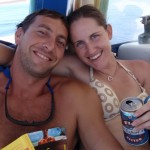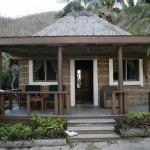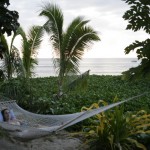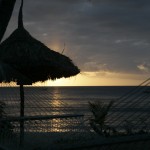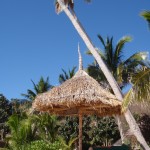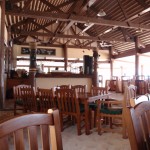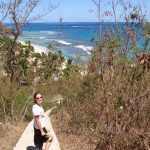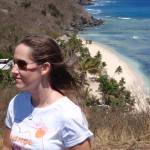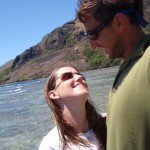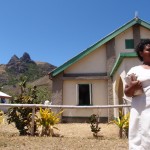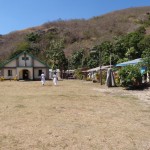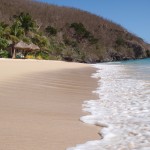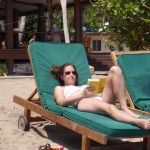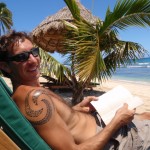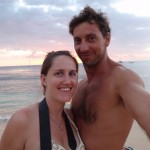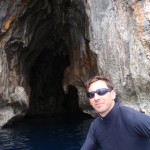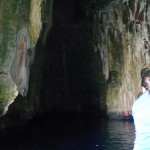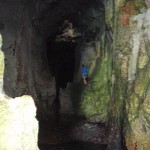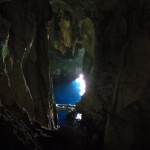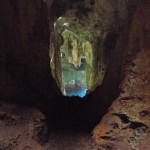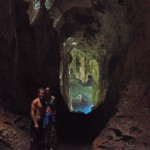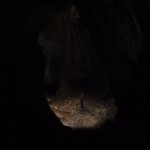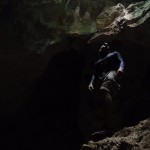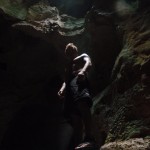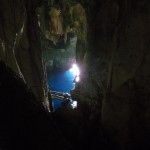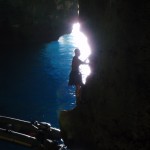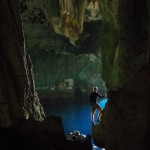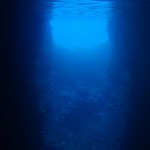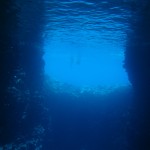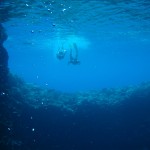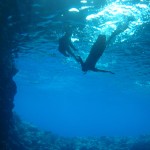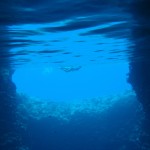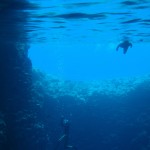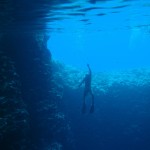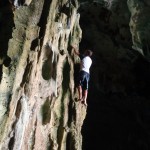Oct 10 2010
Kava
(This post refers to events that happened throughout our stay in Fiji, though primarily Sept. 14th, 16th, and Oct. 3rd)
Kava is a narcotic. That it is a narcotic with only the slightest tiniest itsy-bitsy of narcotic effects to make one think ‘why bother?’ doesn’t deter the Fijians from passing time downing gallons of it, one coconut shell at a time. That it tastes like dirty bath water is also not a deterrent. For some reason neither is the fact that, in Fiji, the traditional preparation is for young boys to thoroughly chew on the pepper root, fully masticating it, spit it out, mix with luke warm water in the tanoa (the traditional container, an artistically carved wooden bowl on four legs) and serve via coconut shell. Thankfully, the traditional preparation is no longer practiced except perhaps in the remotest of villages. Every time I drink kava I make it a point to convince myself of this last bit.
I felt required by my compunction for experiencing local culture to try kava. I also have a compunction for trying new mild (mild-only!) narcotics. So when, on our first day ashore in Lautoka, I found myself wandering the market alone, I knew I would immediately get a chance. City markets, the one in Lautoka in particular, are where men hang out. And wherever men hang out in Fiji, there is probably a kava bowl being passed around.
In the market, I walked by dozens of yaqona vendors. Yaqona is the dried but unmasticated (nowadays they more hygienically pound it) pepper root. I learned later a longer root indicates a more aged pepper plant and in turn better kava. Kava apparently is like wine, and gets better with age. Two or three years is young but frequently used, five years is better. Most of the yaqona at the market was about 18 to 24 inches, though I saw some four foot stuff that was artistically bundled into something resembling modern art. Next to the vendors were the drinkers, twenty tables under a tent, all filled with men lazily sitting around. At the first table I walked by, a man named Mesake cried out “Bula!” and invited me to join them at the table drinking grog. The Fijians are extraordinarily nice; what else could I do but accept?
Despite being far removed from the traditional ceremony, Fijians still retain some aspects of the traditional kava ceremony. Namely, they clap. Guide books will say you have to clap exactly once before being handed the coconut shell of kava and after handing the shell back, clap exactly three times. The claps should be proud, with an exaggerated motion. While this might be true in the remotest villages, I’m here to tell you, in the markets, pool halls, resorts and backpacker camps where I drank the grog, you can feel free to clap an indiscriminate number of times, loudly or softly, shyly or ostentatiously. The only thing in common to all the places was the rhythm or pacing of the clapping. Think the pacing in a rock-paper-scissors game, slow it down just a touch, and you’ll about have it. Certainly not standing-ovation-at-the-theater style. At the pool hall, they simply pat a leg at the requisite speed. When I asked why, laziness was attributed.
Mesake offered me a shell, and as I had read up on kava drinking, I knew about the clapping and that when I drank it, the kava is supposed to go down in one smooth go. There are about three to five ounces of liquid in a normal shell, so anyone with experience from college shot-gunning a poor-tasting American light beer should have no problems smoothly drinking this poor-tasting sandy bath-water concoction.
I handed Mesake back the shell and thought, ‘maybe sandy bath-water isn’t so bad?’ My tongue went slightly numb, and with the two or three subsequent bowls the tiny tingling extended around my mouth and throat. That was about it for effect, just some tingling, maybe some numbness. The bowl went around, celebrating my joining the table. Ten or fifteen minutes would go by and then the person in charge of the kava tanoa at the table would decide it was time for more kava and start passing the shell around again. The time in between passed with Mesake and a woman seated across from me, Paulini, telling me about Fiji at large and more particularly the villages they were from in the Yasawa’s. They gave me the names of people they knew or were related to in the villages they were from and insisted I ask for them when I arrived there. Alas, we never made it to those villages, but the kindness was indelible.
I drank some kava again in the Nadi market while wandering around there with Allison. I secretly presumed there would be grog there, that we would have a chance to try and wanted to see if she would. And so we walked around longer than necessary as I tried to locate some kava drinking. She demurred this time, hesitant at the cleanliness of the whole operation, which admittedly is suspect. I can’t fault her on this point. The same coconut shell is passed to everyone: one person drinks, and the shell is immediately dipped back into the kava in the tanoa and handed to a next person. They certainly don’t clean the coconut shell in between uses. She was, however, up for it at the welcome ceremony at Octopus Resort and she reported that yes, like pretty much everyone else, she thought it tasted like bath water and didn’t particularly like it. I however, was developing quite a curiosity for it.
Two and a half weeks later, I went to Nadi International Airport with Allison to trade goodbyes and other newly learned Fijian. She and I had had a fantastic time together, and I was certainly sad at the thought of not seeing her again for three months or so. The taxi was headed back to a dorm room bed at the awkwardly named Nadi Bay Resort Hotel (comfortable beds and amazing food… best kokonda in Fiji!) It occurred to me that what better way to spend a melancholy evening than around a kava bowl. I redirected the taxi to someplace where they drink kava.
I ended up in downtown Nadi at a pool hall. A pool hall is somewhat of a misnomer as it invokes images of a location filled with pool tables, a dozen of them, maybe two dozen or more. This place was certainly packed with pool tables, you had to nearly sit on one table to take a shot on another. But there was just two tables. I walked in warily but like I belonged and saddled onto a wall to check the place out. All the way on the opposite side of the pool hall, eight feet away, a Fijian flagged me over and handed me a bowl of kava. His name was Ben.
After another bowl of kava, the owner of the pool hall, Sue who also happened to be, I’m pretty sure, a prostitute who propositioned me, motioned I should put money down to play at the only table with action going. It was a challenge table so you had to beat the previous winner, currently a young teen who had been winning ever since I walked in and was dispatching people quickly. So I did, and played one of the best games of my life, banks, combinations, strategy, and a little luck. One of those inspired moments of pool that only come after a couple of beers have steadied your hand and your gaze; instead of beer though, this time it was kava. While playing, we would trade back and forth a few shots, I’d have a cup of kava. In the end, I won and the kid stormed out perhaps upset that the popeye (white foreigner. I hope not derived from the silly cartoon) drinking kava, when he was too young too, had run him off the table. A couple more games saw me lose and I went to the bench to talk with Ben and another Fijian Joe about Fiji. I bought some of the powdered yaqona for us to have more kava after we finished what was in the tanoa. Interestingly, their tanoa was definitely not a traditional one. Instead it was a flimsy blue plastic dish. Flimsy like two-liter coke bottle plastic. After ten bowls of kava I decided it was time to leave. Sue asked if I wanted company; I politely declined and left to find a taxi.
Back at the hotel, lo and behold what do I walk in on but the bartender, a couple of his friends, the security guard and a couple of patrons around a kava bowl. I earn an invitation. One guy is from Kiribati on a fishing boat. Another’s name is Damian, and after hearing I have a yacht, is interested in crewing to Australia. Two hours go by, and with the security guard in charge of the kava bowl, everyone is consuming plenty. After another ten bowls, I’m feeling woosy, almost certainly though, from it being 3 am, five hours after I normally go to bed these days, and not from the twenty or more bowls of kava I consumed.
The next day, I woke up early. No hangover. No residual effects. There weren’t really any effects at the time either. Which makes you wonder, if there’s no effect from drinking poor tasting dirty bath water, than why drink poor tasting dirty bath water? My curiosity with Fijian kava was killed and I haven’t had it since.
Vanuatu kava, on the other hand….. two bowls lays a wallup, four bowls and you won’t be able to walk. We’ll soon find out.
